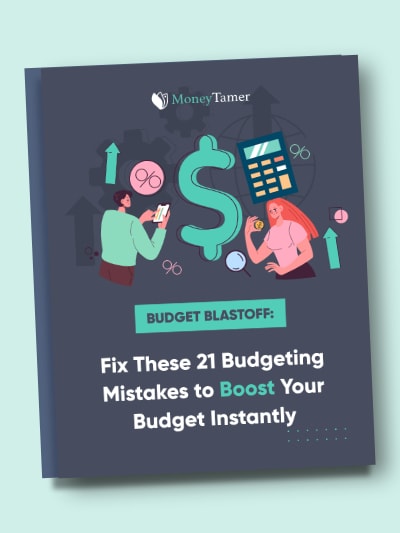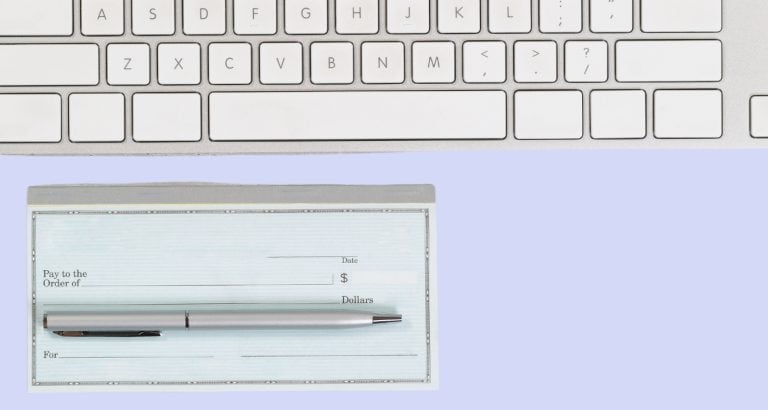4 Pillars of Personal Finance Explained: Why They Matter

Money isn’t everything, but it’s also important to have a handle on your finances to avoid going into debt. There’s no such thing as good debt, which is why you need to operate on a budget and spend less than you earn.
The four pillars of personal finance provide individuals and couples with a framework for managing money. This framework fits any lifestyle, income level, budget, credit card debt, investments, and overall wealth.
As an affiliate partner of various brands and sponsored content, HerPaperRoute may earn commission on qualifying purchases. Disclaimer
The four pillars are assets & savings, debts & liabilities, income, and expenses. When all four pillars are working in conjunction, your financial foundation will be strong.
Assets & Savings
An asset is something of value that you own. If necessary, it can be turned into cash. This means that it can be liquidated upon your request.
What are Personal Assets?
One of the most common assets in a person’s financial portfolio is their home. A home is only an asset for you if you own it.
The home’s value is included in your net worth but is reduced if there is a mortgage on the house.
So, if you have a mortgage, the mortgage amount is subtracted from the value of the home before it is included in your net worth. Having a mortgage to your name then is considered a liability.
Examples of Assets
Aside from your home, other types of assets include the following:
- Cash in savings and checking accounts
- Equity in the property you own
- Any land you own
- 401(k)s
- Investments
- Whole life insurance policies
- Jewelry
- Antiques
Is a Car an Asset?
If you own a car, it is possible that it could be considered an asset under the four pillars of personal finance. The issue with cars as assets is that cars depreciate in value the minute they are driven off the dealership lot and continue to depreciate for the remainder of its life.
Did you take out a loan to pay for the car? If so, you likely have negative equity in the vehicle you own.
You may owe more on the loan than the car’s value, which means you are considered ‘underwater.’ If this is the case, the vehicle is viewed as a liability and not an asset.
Many people don’t realize that owning a car doesn’t always mean it can be listed as an asset in your net worth. When you owe more money on your car than it is worth, you will have to deduct that amount from your overall net worth as a liability.
Related: Calculate Your Net Worth (Free Calculator)
Is a Savings Account an Asset?
Yes, a savings account is considered an asset. The majority of savings funds hold cash, and sometimes even stocks, bonds, and CDs.
So long as the stocks, bonds, and CDs can be liquidated when you need money, the savings account can be included in your net worth as an asset.
Go one step further, a checking account can also be considered an asset. Checking accounts only have cash in them.
Every last cent of the balance in a checking account should be included when valuing your financial situation and determining your net worth.
Debts & Liabilities
As mentioned previously, there is no such thing as good debt. This means that no matter what life obligations you have, you should try to do everything possible to pay your debt down so that it disappears.
Having too much debt in your name will negatively impact your credit score. A lower credit score will lead to higher interest rates.
The fewer liabilities you have, the higher your credit score will be, and the easier it will be to apply for a loan when needed.
Examples of Liabilities
Liability is another word commonly used to describe debt. A liability is something that is owed to someone else. For example, credit card debt, a car loan, a mortgage, and school loans are considered liabilities.
It’s essential to view all of your liabilities in one place to have a clear understanding of how much debt you have to your name. This will help you build a more substantial budget with which to operate.
Related: How to Create a Personal Balance Sheet to Track Assets & Liabilities

Are You Sabotaging Your Budget?
See the budgeting mistakes that are holding you back in this FREE Budgeting ebook. Fix these and your budget will blast off!
Types of Income
There are many different ways to earn income aside from receiving a paycheck every two weeks from your employer. There are no limits placed on how much money you can make, even if you have a full-time job.
No one is stopping you from adding income from other sources so that you can have a nest egg for a rainy day. Your nest egg should include money put into a savings account or into an emergency fund to protect yourself from going into debt when emergency expenses occur.
Related: Emergency Fund vs Savings – Which do you need?
There are five income types under the personal finance pillars: salary, rental property, business income, capital gains, and other sources.
1. Salary
The most common type of income you can earn is from a salary. The majority of employees are considered salaried, which means they make a set amount of money every year based on the contract they sign with their employer.
If you aren’t a salaried employee, you may be paid by the hour and have the opportunity to earn overtime when you work more than 40 hours in a week.
2. Rental Property
If you own a rental property, the money you receive from the tenants is considered income. Rental properties are a great way to earn additional income, especially if they don’t have mortgages.
Rental properties include condominiums, apartments, single-family homes, duplexes, vacation homes, and any other type of property zoned for residential use and can be rented to a tenant.
The big advantage of owning rental properties is that you can charge the tenant whatever you feel is appropriate, within reason, so long as you get it added to the rental agreement.
You won’t be able to change the rent without notifying the tenant, so be sure not to overstep your bounds simply to bring in more income.
3. Business Income
Do you own a business? Do you earn money from the blogs and websites in your portfolio?
When you pay yourself from the profits of a company you own, it is considered business income. There are many challenges of owning a business, including managing the expenses needed to operate.
Business income is taxable, just like any other income you earn throughout the year. You are required to report it on your income taxes and make the necessary payments to the IRS based on your income bracket.
4. Capital Gains
Another form of income is capital gains. Capital gains are profits you earn from selling an asset.
Capital gains are achieved by selling land, stocks, or a business such as your blog. (Learn more about selling blogs and websites here!)
These are considered taxable income. Determining how much the asset is taxed depends on how long you owned the asset before selling it.
Capital gains can be confusing if you have never sold an asset. It might be a good idea to learn more about capital gains tax and how it will impact your tax return.
A short-term capital gain tax is the tax applied to the sale of an asset that you owned for less than one year. The tax rate for short-term capital gain is the same tax rate for your income bracket.
Long-term capital gains tax is the tax applied to the sale of an asset that you have owned for more than one year. The tax rate for a long-term capital gain is either 0%, 15%, or 20%, and it’s based on your filing status and taxable income.
There are exceptions to the rule when it comes to capital gains tax and they most notably appear when selling items like antiques, coins, fine art, and precious metals. These items could be taxed at a rate of 28%.
There is also a net investment income tax associated with capital gains. If you meet any of the following income thresholds, you could face an additional 3.8% tax on top of the capital gains tax applied to the asset you sold:
- Head of household or single: $200,000
- Married, filing jointly: $250,000
- Married, filing separately: $125,000
According to Investopedia, the best way to minimize capital gains tax is to hold onto the asset for longer than one year.
In order to exclude your home from capital gains tax, you must have owned it and used it as your primary place of residence for at least two years in a period of five years prior to selling it. On top of that, you must not have excluded the sale of another home in the two years prior to selling your current home.
Speak to your tax professional to see if you’re eligible to exclude between $250,000-$500,000 in capital gains from the sale of your home depending on a variety of factors.
5. Other Sources of Income
Did you write a book, song, or create a TV show? You can earn royalties from these items each time they are sold, played on the radio, or aired on TV.
Royalties are taxable income and can help supplement the other types of income you earn.
Expenses
Expenses are what you spend on operating a business or living your life. Buying food, clothes, shoes, putting gas in your car, and anything else you purchase are considered expenses.
When creating a budget for your family, you need to include line items for every expense you think you will need each year (landscaping, appliance repair, utility bills, etc.).
4 Types of Expenses
There are four types of expenses: fixed, recurring, non-recurring (but planned), and emergency expenses (significant and unplanned).
Fixed expenses do not change from period to period, which means the amount of money you pay each period remains the same.
Examples of fixed expenses include:
- Mortgage
- Car loans
- School loans
- Utility bills
- Rent
The actual amount of money owed each month could vary, especially with a utility bill (gas, water, sewer, electric), but you still know that they need to be paid monthly.
Recurring expenses are paid monthly at the same amount by a company to run a business. For individuals, regular expenses also include many of the fixed expenses listed earlier.
Non-recurring expenses (but planned) are planned ahead of time but will most likely only happen one time. These expenses happen for both businesses and individuals. Companies prepare for non-recurring costs, such as replacing a broken computer, repairing broken pipes in a bathroom, or replacing the tires on a delivery vehicle.
Emergency expenses (significant and unplanned) can wreak havoc on your budget. Individuals often spend money on emergency expenses related to an injury or health issue that requires a visit or stay in the hospital.
Other emergency expenses include:
- Expenses to repair a damaged or broken vehicle
- Expenses to pay for a sudden move
- Cost of living increases
- Unexpected travel (death in the family)
- Major repairs to your home (insurance helps, but the deductible could be so high you won’t have money to pay for it all)
- Loss of employment
It’s always wise to have a rainy day fund. You might never have to use the money in this fund, but having it there can relieve a lot of worry and stress in your life.
You won’t have to scramble to find cash when a visit to the hospital occurs, you have to put new tires on your car, or have to replace the carpet in your home because of a flood.
Examine Your Financial Situation Today
Now that you have a better understanding of the four pillars of personal finance, you should examine your financial situation. Having a good handle on your finances is essential and helps you live a less stressful life.
Sit down with your significant other or your parents if you are just out of school to review the pillars of personal finance. Seeing all of your debts, assets, and income in one place makes it easier to understand and plan a budget.
It can be challenging to put together a budget, monitor your expenses, pay down debt, and determine your net worth. But once you take the time to do it, it’ll propel your financial understanding and readiness so that you can stress less and enjoy life more.
Related Articles:

Follow along on Instagram!










